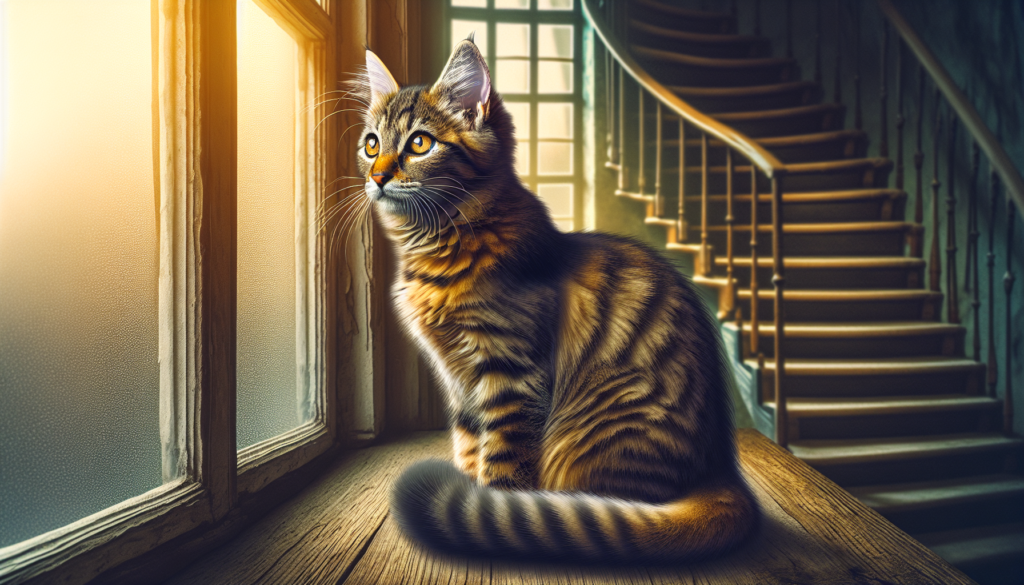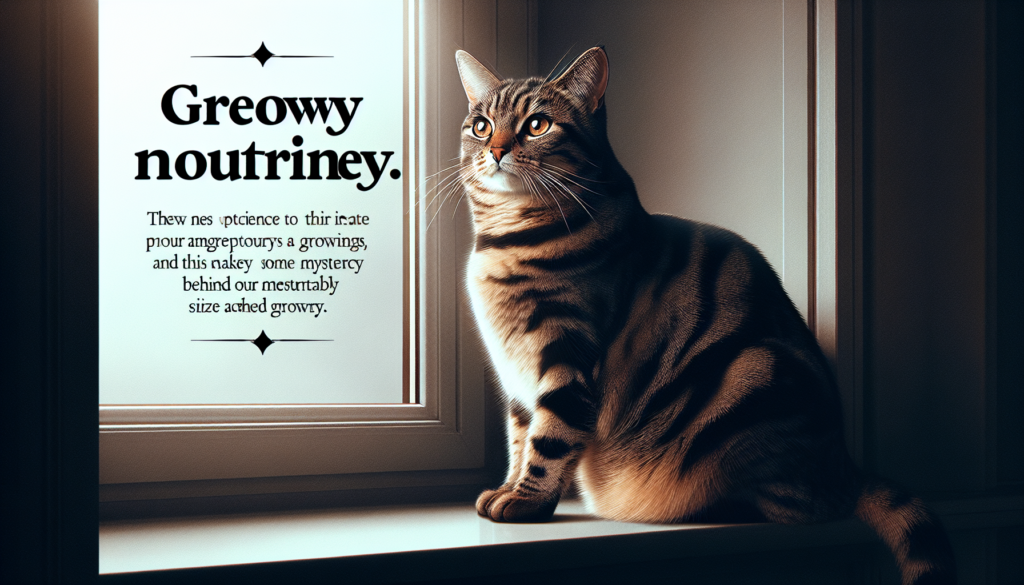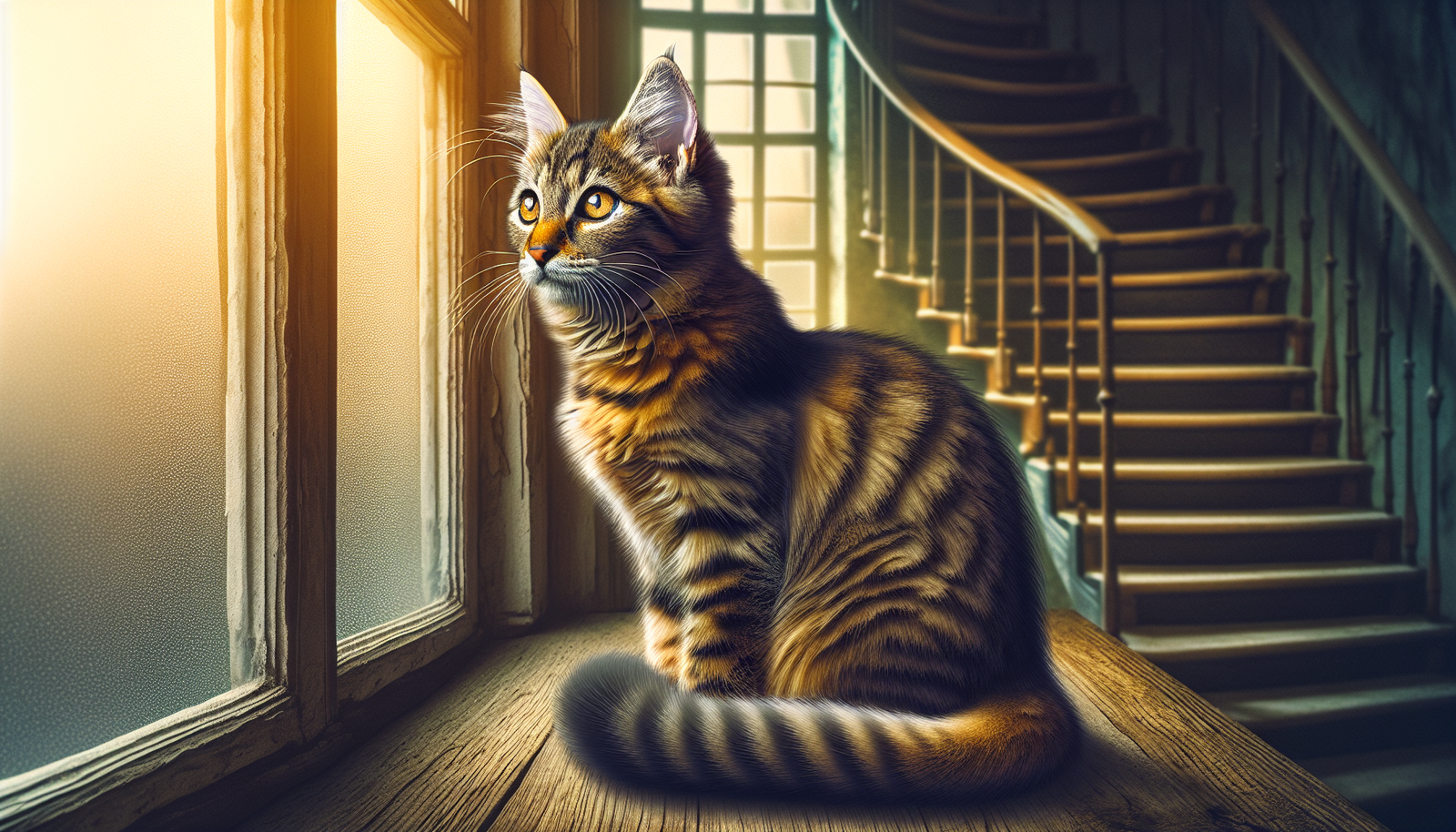Tabby cats are known for their striking coat patterns and playful personalities. But have you ever wondered when these adorable felines reach their full size? Whether you’re a proud tabby owner or simply intrigued by these lovable creatures, it’s essential to understand their growth patterns. In this article, we will explore the fascinating journey of tabby cats, uncovering the timeline of when they reach their full size and stop growing. So, get ready to embark on a delightful exploration of these furry companions!
Factors Influencing the Growth of Tabby Cats
Tabby cats, like any other feline, go through different stages of growth and development. Their size and growth curve can be influenced by various factors, including nutrition, health, genetics, and environment.
Nutrition
Proper nutrition plays a vital role in the growth and development of tabby cats. Providing a balanced diet with the essential nutrients is essential to support their growth. A well-rounded diet should consist of high-quality cat food that meets their specific nutritional needs. This includes a balance of proteins, fats, carbohydrates, vitamins, and minerals.
Health
Maintaining good overall health is crucial for the optimal growth of tabby cats. Regular vet check-ups and preventive care, such as vaccinations and deworming, help keep them healthy. Spaying or neutering can also impact their growth, as it can prevent certain health issues and promote overall well-being.
Genetics
Genetics plays a significant role in determining the size and growth patterns of tabby cats. The traits passed down from their parents can influence their physical characteristics, including their size. Breeders carefully select and mate cats with desirable traits to produce offspring with specific characteristics.
Environment
The environment in which tabby cats live can also affect their growth. Providing a suitable living space and climate is essential for their overall health and development. A stress-free environment helps promote proper growth and prevents potential stunted growth due to anxiety or discomfort.
Average Size and Growth Curve of Tabby Cats
Understanding the average size and growth curve of tabby cats can give you a better idea of what to expect as they go through different stages of their lives.
Kittenhood
During the kittenhood stage, tabby cats experience rapid growth and development. From birth to around four weeks of age, they rely solely on their mother’s milk for nutrition and their growth is quite significant during this period. They double their birth weight within the first week and continue to gain weight steadily.
From four to eight weeks of age, kittens begin to wean and transition to solid food. This stage is crucial as their diet transitions from solely milk to a mixture of milk and solid food. Providing a nutritionally balanced diet during this period is vital to support their growth.
From eight weeks to four months, tabby kittens continue to grow and develop. You may notice a steady increase in their size and weight during this time. It is important to provide them with a proper diet and monitor their growth to ensure they are on track.
Adolescence
During adolescence, tabby cats continue to grow, although at a slower pace compared to their kittenhood stage. Typically, this stage occurs between four months to around nine months of age. They may experience growth spurts during this time, which can be reflected in increased size and weight.
Adulthood
It is generally expected that tabby cats reach their full size and growth potential by the time they reach one year of age. However, individual cats may continue to fill out and mature until around two years of age. After this point, their growth is typically complete, and they are considered fully grown adults.

1. Factors Influencing the Growth of Tabby Cats
To explore the factors that influence the growth of tabby cats further, let’s take a closer look at each aspect individually.
1.1 Nutrition
Nutrition is a fundamental factor that directly impacts the growth and development of tabby cats. A well-balanced diet provides the necessary nutrients for healthy bone development, muscle growth, and overall vitality.
1.1.1 Diet
Feeding tabby cats a diet specifically formulated for their nutritional needs is essential. High-quality cat food that contains the right combination of proteins, fats, carbohydrates, vitamins, and minerals is crucial for their growth. It is recommended to choose cat food that is age-appropriate, and if necessary, consult with a veterinarian for dietary recommendations.
1.1.2 Feeding Schedule
Establishing a regular feeding schedule is important to promote healthy growth in tabby cats. Stick to a consistent routine, offering meals at the same time each day. This routine not only helps with their growth but also encourages good eating habits and aids digestion.
1.1.3 Food Quality
Choosing high-quality cat food that meets the nutritional standards recommended by veterinarians is vital for the growth of tabby cats. Avoid low-quality or generic brands that may not provide adequate nutrients or may contain fillers that offer little nutritional value. Opt for reputable brands that prioritize quality ingredients.
1.2 Health
Maintaining good overall health is crucial for the growth and well-being of tabby cats. Keeping up with regular vet check-ups and providing proper preventive care can significantly impact their growth.
1.2.1 Overall Health
Regular veterinary examinations can help identify any health concerns or potential issues that may affect the growth of tabby cats. Prompt treatment of any health conditions, as well as preventive measures such as deworming, parasite control, and dental care, contribute to their overall growth and development.
1.2.2 Spaying/Neutering
Spaying or neutering tabby cats can have an impact on their growth. In general, spaying or neutering at the appropriate age recommended by veterinarians promotes overall well-being, prevents certain health issues, and may contribute to the healthy growth of tabby cats.
1.2.3 Vaccinations
Regular vaccinations are crucial for the health and growth of tabby cats. Vaccinations protect them from various diseases, preventing potential setbacks in their growth and development caused by illnesses.
1.2.4 Illness and Disease
Exposure to illnesses or the presence of chronic diseases can affect the growth of tabby cats. It is important to monitor their health closely and seek veterinary care promptly if any signs of illness or disease arise. Early intervention and treatment can help minimize the impact on their growth and ensure they receive the necessary care.
1.3 Genetics
The genetic makeup of tabby cats can significantly influence their growth potential and physical characteristics.
1.3.1 Breeding
Purposeful breeding, in which cats with desirable traits are selectively mated, can affect the size and growth patterns of tabby cats. Breeders aim to produce kittens with specific characteristics, including size, by carefully selecting their breeding pairs.
1.3.2 Genetic Factors
Genetic factors inherited from the parents can influence the growth of tabby cats. These factors can determine their size, body structure, and overall growth potential. While genetics play a significant role, it is important to note that other factors, such as nutrition and health, can also impact their growth.
1.4 Environment
The environment in which tabby cats are raised and live can impact their growth and overall development.
1.4.1 Living Space
Providing a suitable living space is important for the growth of tabby cats. A spacious and comfortable environment allows them to move freely, exercise, and engage in natural behaviors. Sufficient space encourages healthy physical development and prevents potential stunted growth caused by limited mobility.
1.4.2 Climate
The climate in which tabby cats live can also affect their growth. Extreme temperatures or unsuitable environmental conditions can impact their overall well-being and potentially interfere with their growth. It is important to provide a climate-controlled environment that ensures their comfort and supports healthy growth.
1.4.3 Stress Levels
High levels of stress can negatively impact the growth and development of tabby cats. Stressors such as loud noises, frequent disruptions, or conflicts with other pets in the household can hinder their growth. Creating a calm and stress-free environment promotes healthy growth and overall well-being.
2. Average Size and Growth Curve of Tabby Cats
Understanding the average size and growth curve of tabby cats can provide valuable insights into their development from kittenhood to adulthood.
2.1 Kittenhood
During the kittenhood stage, tabby cats experience rapid growth and development. The specific growth patterns of tabby kittens can vary, but there are some general milestones to be aware of.
2.1.1 Birth to 4 Weeks
In the first four weeks of life, tabby kittens rely solely on their mother’s milk for nutrition. They typically double their birth weight within the first week and continue to gain weight steadily. At this stage, their primary focus is nursing and growing, transitioning from helpless newborns to more active and curious kittens.
2.1.2 4 to 8 Weeks
Between four to eight weeks of age, tabby kittens begin to wean and transition to solid food. This period is crucial as they start to explore and experiment with different food textures. Gradually introducing them to a balanced diet that includes kitten-specific cat food helps support their growth and allows them to adjust to different foods.
2.1.3 8 Weeks to 4 Months
From eight weeks to around four months of age, tabby kittens continue to grow and develop at a significant rate. During this period, you may notice a steady increase in their size, weight, and overall physical capabilities. This stage is vital for their bone development, muscle growth, and overall development.
2.3 Adulthood
By the time tabby cats reach one year of age, they are generally considered to have reached their full size and grown into adult cats. However, individual cats may continue to fill out and mature until around two years of age.
2.3.1 9 Months to 1 Year
Between nine months and one year of age, tabby cats typically experience the final stages of their growth. Their bodies continue to develop, and they gradually reach their adult size and weight. During this time, their growth rate may slow down compared to the rapid growth seen during kittenhood and adolescence.
2.3.2 1 Year and Beyond
After reaching one year of age, tabby cats are considered fully grown adults. While they may continue to fill out and mature for a little longer, their growth is generally complete. From this point on, their size and weight are unlikely to experience significant changes, and they enter the stage of stable adulthood.
In conclusion, the growth of tabby cats can be influenced by various factors, including nutrition, health, genetics, and environment. Providing them with a balanced diet, taking care of their overall health, considering genetic factors, and ensuring a suitable living environment all contribute to their optimal growth. Understanding the different stages of growth, from kittenhood to adulthood, allows for better monitoring and care of tabby cats throughout their lives.


